Spiders may lack ‘ears’ but researchers at Binghamton University in New York have discovered that orb-weaving spiders can detect sound through minute vibrations on their web.
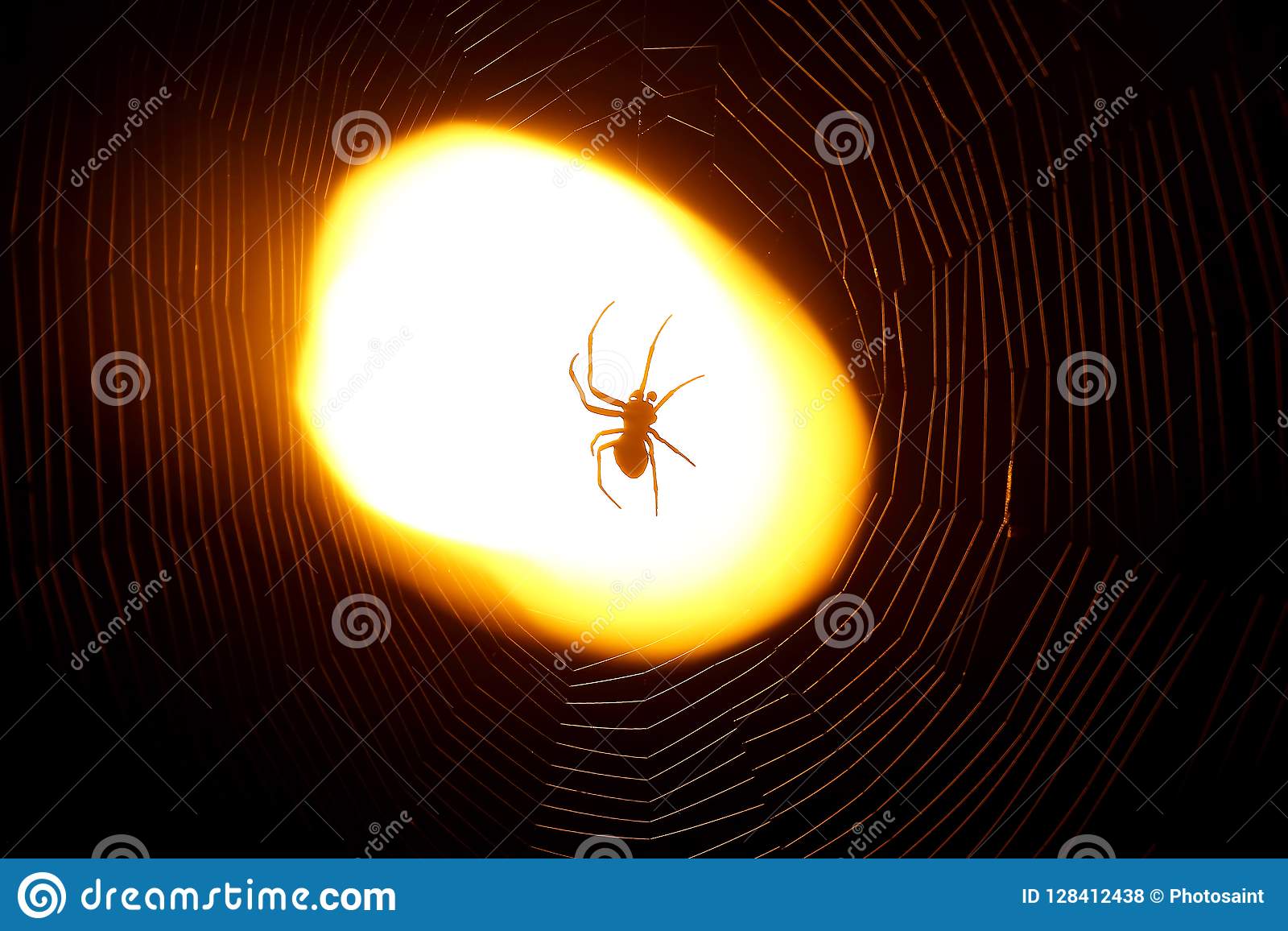
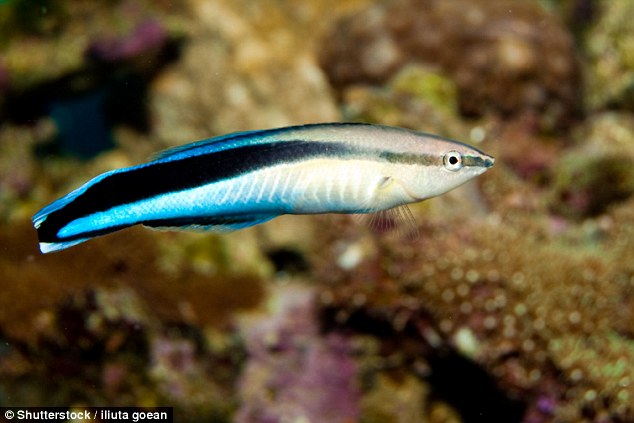
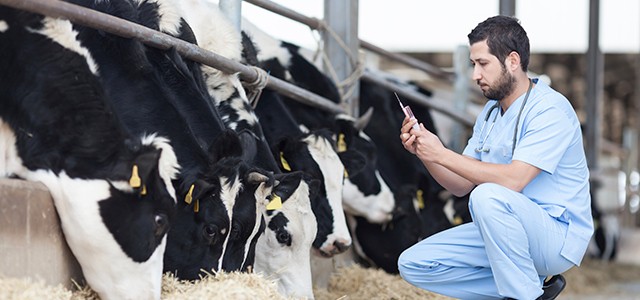
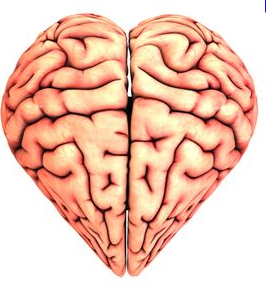
The adult within us dreams of Utopia but we can only manifest Utopia by being fully adult human beings, and not being controlled by our primeval infant ancestors. To put it slightly differently, the adult must steer the car, not the child if we wish to arrive at our destination.
We think we are one person, but are actually several people inhabiting the same body. That is because our brain is made of many different parts which have evolved over immense spans of time. We can think of the annual growth rings in a tree. The earliest rings formed when the tree was a tiny sapling are still there at the heart of the noble forest giant, hundreds if not thousands of years later. The more ancient parts of our brain control basic activities such as breathing, moving, resting, feeding, emotions, and memory, while at the other extreme is the most recently-evolved part of our brain that provides us with the ability to carry out rational thought processes and reflect on what we do.
‘We can think of the annual growth rings in a tree. The earliest rings formed when the tree was a tiny sapling are still there at the heart of the noble forest giant, hundreds if not thousands of years later’.
In reality we see with our mind. That is because everything we do in life is controlled by the mind, and our senses are only its servants. When we hear anyone’s screams, irrelevant of species, we know that they are in trouble. We feel for them and we would not be human if we didn’t. This is why we have words such as inhuman, cruel, inhumane, humane, kindly, caring, compassionate, charitable, unfeeling, hard-hearted, warm-hearted, sympathetic, empathetic, callous, magnanimous, and countless others.
Many people do not think about what they are eating, but increasing numbers are doing just that, hence the vegan revolution. The vegan revolution has important implications for our state of mind. A consequence of behaving kindly is that we are kind to ourselves at the same time, When we help others, when we show them kindness we feel far better inside ourselves. Our heart glows with warmth and we walk tall with pride. However, when we treat others unkindly and callously we shrink inside and become small, mean, hard-hearted. We cannot feel proud of ourselves and we cannot have peace in our heart. At the end of the day ultimate happiness is all about having peace in our heart.
Such is the folly of the unkind life. The thief, the brutal person, the cheat, ends up doing the same to themselves as they do to others. This is basically all about the Golden Rule – do unto others as you would have them do unto you. When we kind to others we are kindest of all to ourselves (notwithstanding cases where would-be rescuers end up dying themselves). And when we are unkind to others we are unkindest of all to ourselves.
‘Such is the folly of the unkind life. The thief, the brutal person, the cheat, ends up doing the same to themselves as they do to others. This is basically all about the Golden Rule – do unto others as you would have them do unto you’.
In either case we carry the memory of our behaviour to the grave, whether for good or ill. We may forget or brush aside good deeds we have done, but bad deeds are like an immovable thorn in our foot, a pillow of thistles that accompanies us for the remainder of our days. We can try and make amends for our wrongdoing, but we can never undo what has been done, and it can torment us savagely. To sum up, my belief is that we must reconcile our behaviour to conform to what we know to be right. The human dream is the product of the human brain, the product of the advanced brain that is uniquely human. We yearn for the land of our dreams, but we prevent ourselves from reaching there by our primitive behaviour, behaviour of another time, an ancient time. Thus all our behaviour must be compatible with what we know to be right if we are ever to discover happiness and fulfilment in our lives.
Recently-evolved parts of the mind allow us to examine more rudimentary behaviours and preferences in the light of more evidence. Perhaps this process is akin to that of gaining expert advice when buying a house or car, or seeking specialist medical advice for example. In these cases our poorly-informed minds are not up to the job of making expert decisions, so we consult someone who does have the experience and knowledge. The question is then “what shall we do for the best?” We are now all armed with that inner specialist – the advanced human brain. We have built-in a mind that can make expert decisions of the kind required. We are fools indeed not to heed its advice. If we wish to enjoy the blessings that the human mind craves we must see, hear and behave with our fully human mind, not the mind of our primeval ancestors. Thus the vegan life is not at all about being better than others, but by treating others decently, and being best of all to ourselves.
‘Thus the vegan life is not at all about being better than others, but by treating others decently, and being best of all to ourselves’.
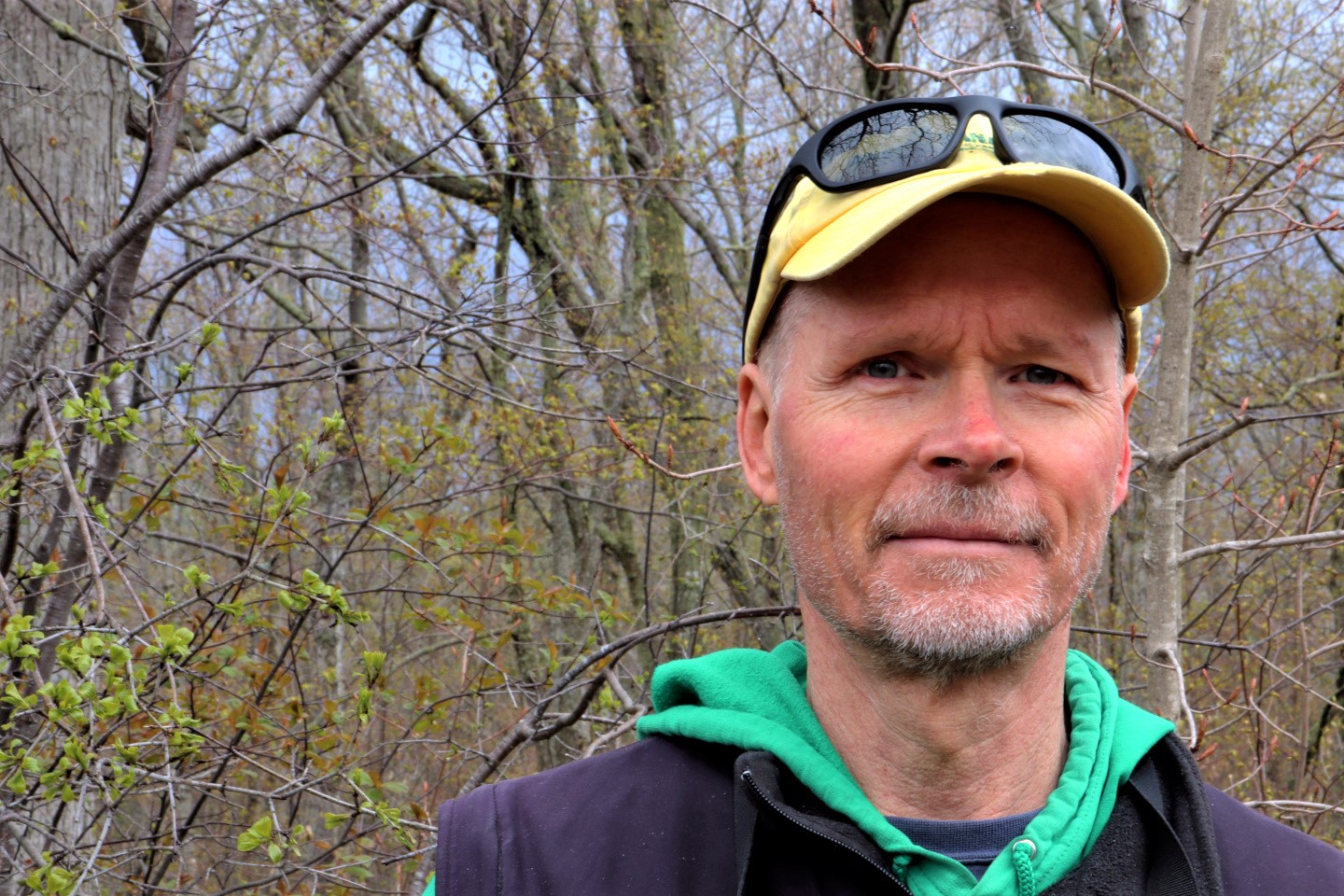
My family moved to Auckland, for the sheer adventure of it, when I was three and we sailed to Canada five years later. We travelled by ocean liner (six weeks), and I remember petting a kangaroo under a tree during a stop in Australia en route. New Zealand, with its mild climate and proximity to the ocean, was a lovely place to spend my early formative years.

From my earliest memory I’ve loved all animals. To me it is entirely natural and normal to perceive other animals as other beings, equally involved in their precious lives as I am in mine. It follows that to do another animal harm is completely alien and repugnant to me, and I remember feeling far more estranged from any child who squashed bugs under their shoes than from the poor creature they were killing. My decision much later to study biology was a direct outgrowth of my strong feelings for animals.
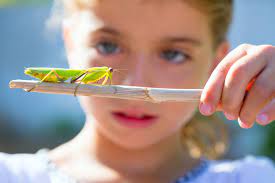
‘I remember feeling far more estranged from any child who squashed bugs under their shoes than from the poor creature they were killing.’
There is a pattern in scientific discovery that the more we come to know about an animal, the more complex and sophisticated we find it to be. It is hard to imagine that not long ago we thought we were the only tool-users, the only species with emotions, the only one to communicate with symbols, the only one with a personality and self-awareness, and so on. And so while I’m open to the possibility that some “simple” animals—sponges, or jellyfishes, perhaps?—might lack sentience (the capacity to feel), the idea seems increasingly doubtful. Regardless, I believe it is good policy to follow a version of the “precautionary principal,” which in this case assumes that all animals are sentient unless science compellingly indicates otherwise.
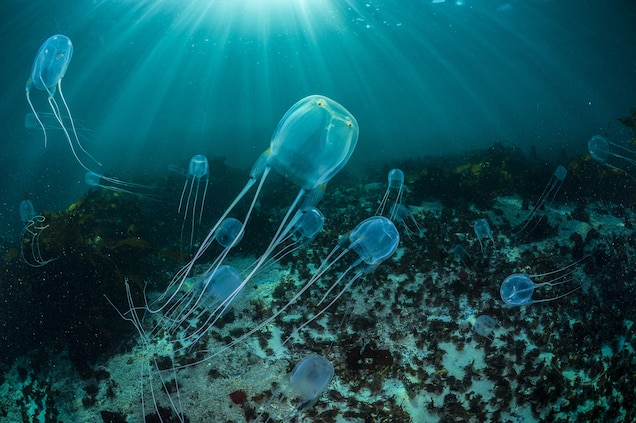
Image of Jellyfish: National Geographic
‘It is good policy to follow a version of the “precautionary principal,” which in this case assumes that all animals are sentient unless science compellingly indicates otherwise’.
In my last two books I have synthesized discoveries for two often demeaned and maligned groups of animals: fishes and insects. Examples include: referential signaling (fishes), observational learning (both fishes and insects), mental mapping (fishes), face recognition (both), mirror self-recognition (both), inferential reasoning (both), problem solving (both), and tool-use (both). Fishes are clearly emotional, and while there is less evidence for insects (maybe because we haven’t been looking for it), insects share with us biochemical pathways such as a dopamine system implicated in pleasurable feelings, and they respond in ways that suggest fear, arousal, and anger, for instance.
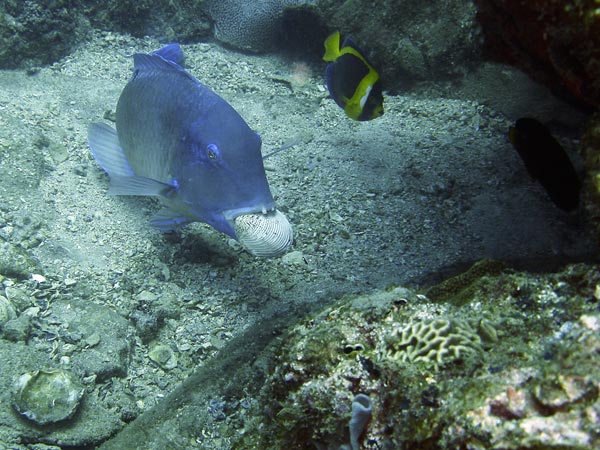
Blackspot tuskfish on The Great Barrier Reef. The fish repeatedly bash the shellfish against rocks to get to the edibles inside.
There is no inherent distinction. Animals we have domesticated retain the same relevant anatomy and physiology as their wild ancestors. Behaviorally, however, there have been changes depending on the species and the context in which we keep them. Dogs have been shown to communicate with humans in ways that their wolf ancestors cannot. This makes evolutionary sense because dogs, unlike wolves, benefit from being acutely attuned to their human providers. For example, experiments at the Clever Dog Lab, in Vienna, show that, like us, dogs glance first (for just a few milliseconds) at the side of our faces that conveys more emotions. This unconscious behavior allows dogs (and us) to get a quick read of whether the person is, say, hostile or friendly. But since dogs’ faces don’t convey emotions in this asymmetrical manner, they don’t glance first at one side of another dog’s face. Nor do we.
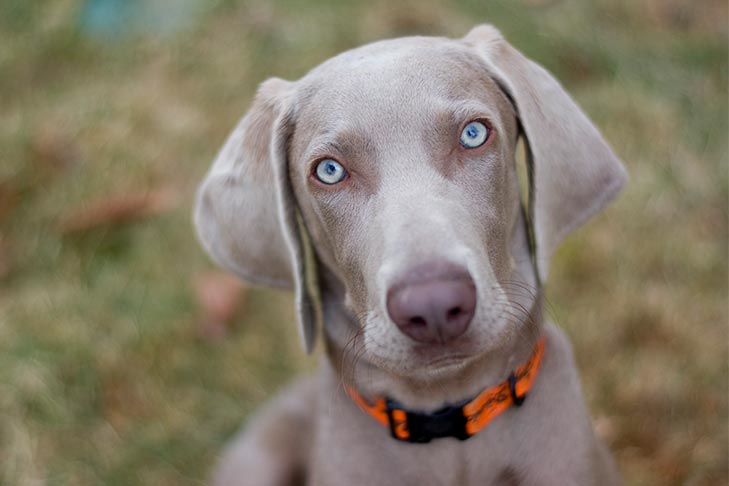
Biologically, we are animals. And that’s much more significant than mere semantics. We literally share the same genetic, anatomical, and biochemical roots. And let’s be clear that humans are not some pinnacle of evolution—a high-point. We are another species of ape, one whose evolutionary trajectory happened to result in a big brain that in turn spawned fairly (though not entirely) unique emergent cultural phenomena such as art, technology, birthday cakes, and cigarettes.
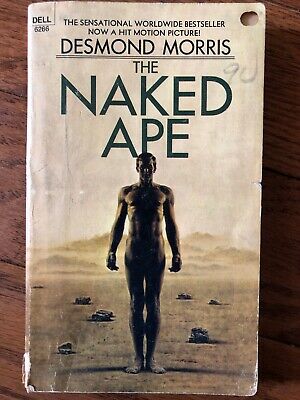
Evolutionary Biologist Desmond Morris’s ‘The Naked Ape’ struck a chord with the public when it was first published in 1967
I mentioned some examples above, but here’s one that I find especially appealing and revealing. Fishes of several species have been shown to “fall” for the same optical illusions as we do. For example, if you teach a fish to select the larger of two circles (by touching it with her mouth or squirting water at it, for a food reward), then present the Ebbinghaus Illusion—in which one of two identical circles seems larger because of the arrangement of (smaller) dots surrounding it—and the trained fish will choose the circle that appears larger. To me this is a quite telling result. It illustrates that a fish can have beliefs, and that those beliefs are fallible. If the fish’s mind worked like an unthinking, unfeeling robot, it would perceive the two circles as equal. Another example illustrating the sharpness of a fish’s mind is the remarkable bird-hunting behavior shown by certain fishes. In freshwater lakes of southern Africa, predatory tigerfishes have learned to catch swallows by leaping from behind and snagging the birds in mid-air. If you know swallows then you’ll know that they are fast, erratic fliers (they need to be to catch their flying insect prey). Not only does the tigerfish behavior require impressive athleticism and coordination, it also requires planning. Catfishes in French rivers also show clever planning when they carefully stalk and ambush pigeons bathing and drinking in the shallows.
‘An example illustrating the sharpness of a fish’s mind is the remarkable bird-hunting behavior shown by certain fishes.’
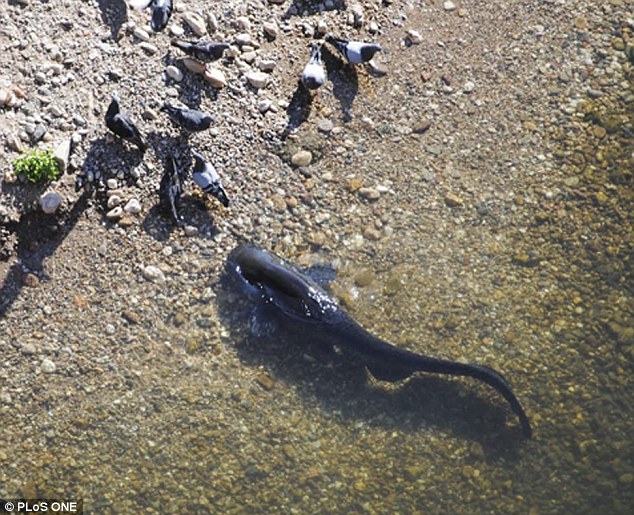
Catfish waiting for pigeons to get close enough to catch them.
Here are just a few of many reasons. Flies belong to the most successful group of animals on the planet, the insects, which make up 80 percent of all animal species living today. At 160,000 described species, and probably around five times that many still undiscovered, flies are probably the most diverse order of animals ever. Flies are also very fecund: in one year, a single pair of fruit flies could produce a dense ball of flies whose diameter stretches from here to the sun! (This calculation illustrates the importance of nature’s checks and balances.) Flies have an attention span, and they show rational decision-making, and deductive reasoning (A>B, B>C, thus A>C). Flies have taught us more about genetics than any other animal. Their maggots are the stars of the growing field of forensic entomology, helping to solve murders and exonerate the wrongly accused. Fly maggots are also effective in healing stubborn wounds such as burns, severe bedsores, non-healing surgical wounds, diabetic foot ulcers, and bone infections. Flies’ colorful sex lives include serenades, dancing, foreplay, gift-giving, cannibalism, bizarre interlocking genitalia, and giant sperm. Flies also self-medicate, using alcohol (in fermenting fruit) as a toxic defence against parasitic wasps.
‘Flies’ colorful sex lives include serenades, dancing, foreplay, gift-giving, cannibalism, bizarre interlocking genitalia, and giant sperm. Flies also self-medicate, using alcohol (in fermenting fruit) as a toxic defence against parasitic wasps’.
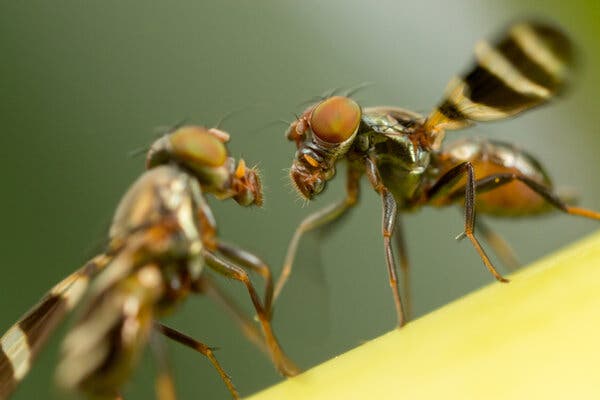
Flies have taught us more about genetics than any other animal.
I think the main reasons are ignorance and economics. While many people may have a vague idea that meat production is not very nice for the animals, relatively few know, and fewer still wish to know, the ugly details of industrialized meat, dairy and egg production. And because most people enjoy the taste of these products, they don’t wish to be confronted with information that might conflict with their lifestyle. Unfortunately, there is a persistent and deep-seated misconception that plant-based foods are less palatable and rewarding than animal-based foods. This is why the rise of plant-based and lab-cultured meats and dairy products has the potential to be a game-changer in human dietary choices. But as long as these products cost more than the heavily-subsidized products of animal agriculture, large-scale change will be slow in coming.

Image of lab grown dairy products from Phys.Org
For most of the world, I believe a transition to plant-based eating is a critical component of the change that needs to happen. Animal agriculture uses about 83% of arable land to produce just 18% of the calories we consume as a species. Livestock today comprise a grotesque 60% of the vertebrate animal biomass on Earth, with humans making up 36% and wildlife a mere 4%. Anyone who thinks our meat habit isn’t a major if not the leading cause of the climate emergency, and current and future pandemics, is kidding themselves.
‘Anyone who thinks our meat habit isn’t a major if not the leading cause of the climate emergency, and current and future pandemics, is kidding themselves’.
In addition to being a vegan, and an author, I share issues on social media, occasionally write a letter to the editor, donate to charities, sign petitions, and maintain an animal-friendly investment portfolio. I give around 15-20 presentations in a typical year, and I do lots of media and podcast interviews, especially in years when a book comes out.
My website is jonathan-balcombe.com, I have an author page on facebook, and I tweet occasionally. My books are widely available online, and most bookstores (and libraries) will acquire copies upon request.

NASA is already considering what kind of habitation we’ll need to survive on the surface of Mars and are working towards colonising the planet by 2030, Elon Musk’s company, SpaceX, has settled for a date even before then. Those of us old enough will recognise the parallels with President Kennedy’s 1962 speech: “I believe that this nation should commit itself to achieving the goal, before this decade is out, of landing a man on the Moon and returning him safely to Earth”.
The colonisation of Mars is now out of the realms of science fiction and into the realms of practical possibility. Will we colonise Mars within the decade? What will it mean for the human race and other animals? Will the new food system be Humanity’s Do-Over? Can we cease eating animals before we even set foot on Mars?
Read the Sentient Media article here
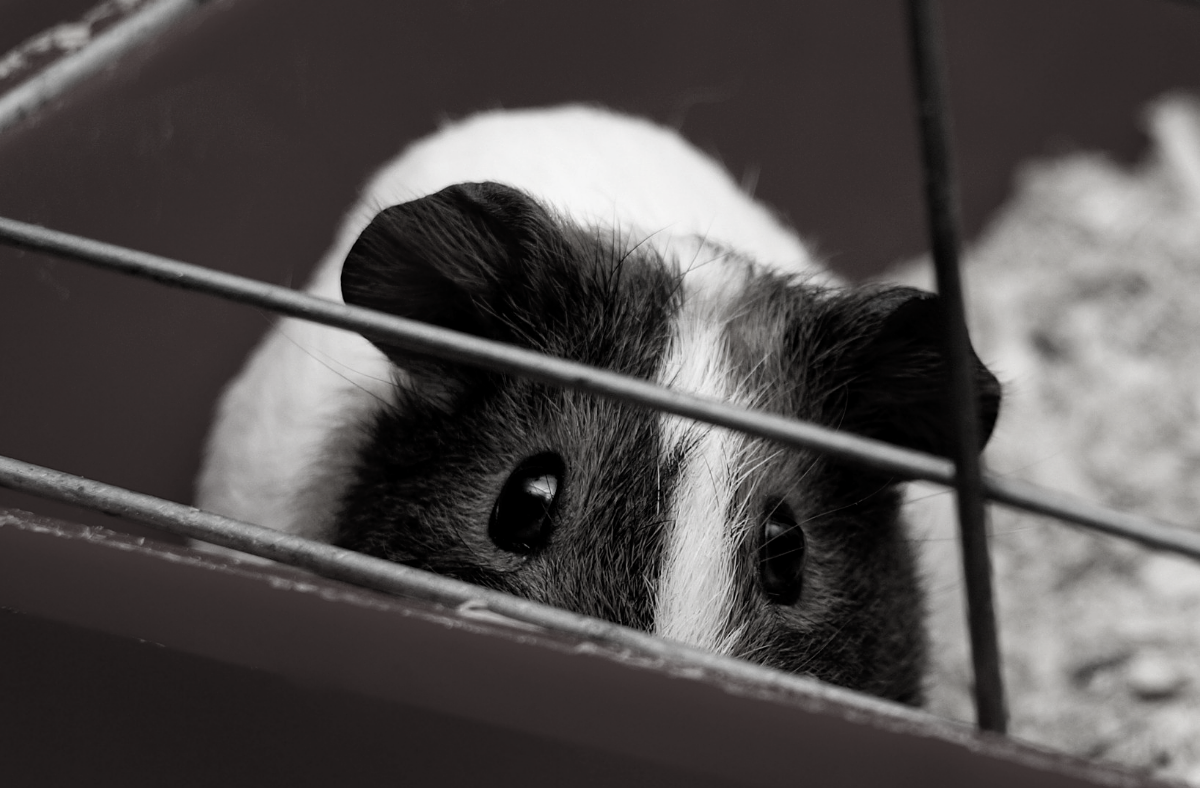

1 Tara, what are the statistics around laboratory testing on animals in New Zealand? Is it different from comparable countries, say Australia and the US?
In NZ animals manipulated for claimed scientific purposes are categorised by the government into three groups — research, testing and teaching (RTT).
Approximately 300,000 animals are used for research, testing and teaching (RTT) in NZ every year.
New Zealand’s latest animal usage statistics (compiled and released by the NZ government) can be found on this page
The most commonly used animals for RTT in 2016 were cows, sheep, fish, mice and birds with cows ranking at #1. In other countries the most commonly used animals for claimed scientific purposes are normally mice or rats. In NZ we are unique in that a lot of research goes into trying to enhance the animal agriculture industry, which explains why cows and sheep ranked the #1 and #2 most used animal in RTT in 2016. You can read more about this here https://nzavs.org.nz/articles/vivisection-and-agriculture/
2 Where are they tested on, and who by?
At least 139 different facilities across NZ use animals for RTT.
We don’t have a complete list of all the facilities who use animals for RTT in NZ. We only have access to the list of facilities which had an approved code of ethical conduct or had a notified arrangements to use an approved code in 2016 here.
In short, places that use animals for research, testing or teaching purposes can be found all over NZ. Universities, Commercial organisations, Crown Research Institutes, Government departments, Polytechnics and Schools all use animals for RTT purposes in NZ.
Most animal labs will be well hidden, and you may walk or drive past one on a daily basis without even knowing. For example, the University of Otago’s animal lab is on the top story of the Hercus Building which is right in the heart of Dunedin.
3 Can you give us some examples of the type of tests animals endure and the reasons for them?
Animal testing and experimentation is often detrimental to the individual animals involved. Examples happening in NZ include:
One example of an awful animal test happening in NZ is the Forced Swim Test. The Forced Swim Test is a cruel and invalid animal test that is used as a misguided attempt to mimic depression or hopelessness in humans. A small animal, usually a mouse or rat, is given an experimental treatment and then placed into a beaker partially filled with water.
Unable to escape, the animal will paddle desperately until they give up and float. Many animals are terrified. The amount of time that the animal spends struggling versus floating is measured. The claim is that when animals spend more time floating, they are deemed to be more “depressed.” See a short video demonstrating this here. You can find out more about this test here https://nzavs.org.nz/forced-swim-test/
4 Animals are not being tested on all the time. Describe their life in a laboratory.
There is no one mould that fits all animals for this, some animals will spend their entire life without seeing sunlight or breathing in fresh air in an overcrowded cage with nothing but a paper towel to play with, while others will spend their lives in spacious paddocks with other animals.
There are also breeding units in NZ where animals are used for RTT and then returned back to the breeding unit until the next time they are “needed.”
5 Many animals are sacrificed for classroom biology experiments. What do you say about vivisection in our schools?
There are so many teaching methods available that don’t involve the use of animals (dead or alive), it is utterly pointless to dissect animal bodies.
From amazing virtual learning, books and sophisticated models to computer models, the animal-free options are endless! Animals don’t need to be sacrificed for their anatomy to be learnt by high school students, humane education is the way forward for animals and students.
There are many reasons why humane education is better than harmfully using animals including:
Animals are saved
Some animals are bred and killed for the sole purpose of being used in animal dissections. If a humane alternative is used instead, these animals can be rehomed, or they may never have been bred for this purpose in the first place! Animals are sentient and should be treated with love and respect, they should not be treated as if they are mere lab tools.
Dissecting animals may also teach students that the right, and perhaps only way to study biology is to kill animals and take them apart which we know isn’t true. It’s important that children learn to have compassion for animals and to recognise each animal’s inherent worth.
The impact on student well-being is minimised
No student is going to be negatively emotionally impacted by using a humane teaching method. However, the same cannot be said for teaching exercises that harm animals. For the students who don’t disconnect with what is happening, they could be left with psychological trauma. Stressful situations like this may also put students off wanting to pursue a career in science.
Learning outcomes are achieved
Students often perform just as well, if not better when using non-animal alternatives. These alternatives can be repeated to consolidate learning and they remove the emotional trauma that animal dissections can cause some students. Learning can be impacted by a negative emotional state, students that are uncomfortable when participating in an animal-based teaching exercise, may not learn or retain information as well.
Humane Education fulfills already existing guidelines
The principle of Replacement is promoted in NZ law. This principle states that institutes and individuals should replace the use of animals in teaching by substituting for animals, where appropriate, non-sentient or non-living alternatives, or by imparting the information in another way.
Many non-animal alternatives for dissection exist and students can meet their learning goals without using animals, so it is our ethical responsibility to use non-animal alternatives instead of animals.
When schools and tertiary institutes choose to use Humane Education to teach their students, they fulfill already existing guidelines such as the Principle of Replacement.
6 What are the alternatives to animal testing?
The short answer: There are so many viable methods of research, testing and teaching that don’t involve the harmful use of animals!
The long answer: There are many different types of research, testing and teaching and there are viable non-animal-based methods for many of these.
There is also a strong need for more non-animal-based methods to be developed — Where there are gaps there are also opportunities to create viable and humane methods.
Animals are not appropriate models for predicting the human response so when it comes to finding viable research methods for medical advancement, we need to make sure our start point is accurate — this is where human-relevant research is important
Non-animal based and human relevant methods include using scanning technologies, micro-dosing, microfluidic devices, isolated organs, sophisticated computer programs, human tissues or organ systems, Epidemiology and more! Read about these humane and viable methods here https://nzavs.org.nz/the-solutions
7 Do you think our Government needs to legislate against animal testing?
Absolutely. Instead of sticking to what has always been done, we should strive for what is best, both ethically and scientifically, and that is ending all animal experimentation.
At NZAVS our mission is to end animal experimentation and the harmful use of animals for research, testing and teaching in Aotearoa New Zealand – for animals, people and science.
Find out more and join our cause here https://nzavs.org.nz
Thankyou for your time, Tara!
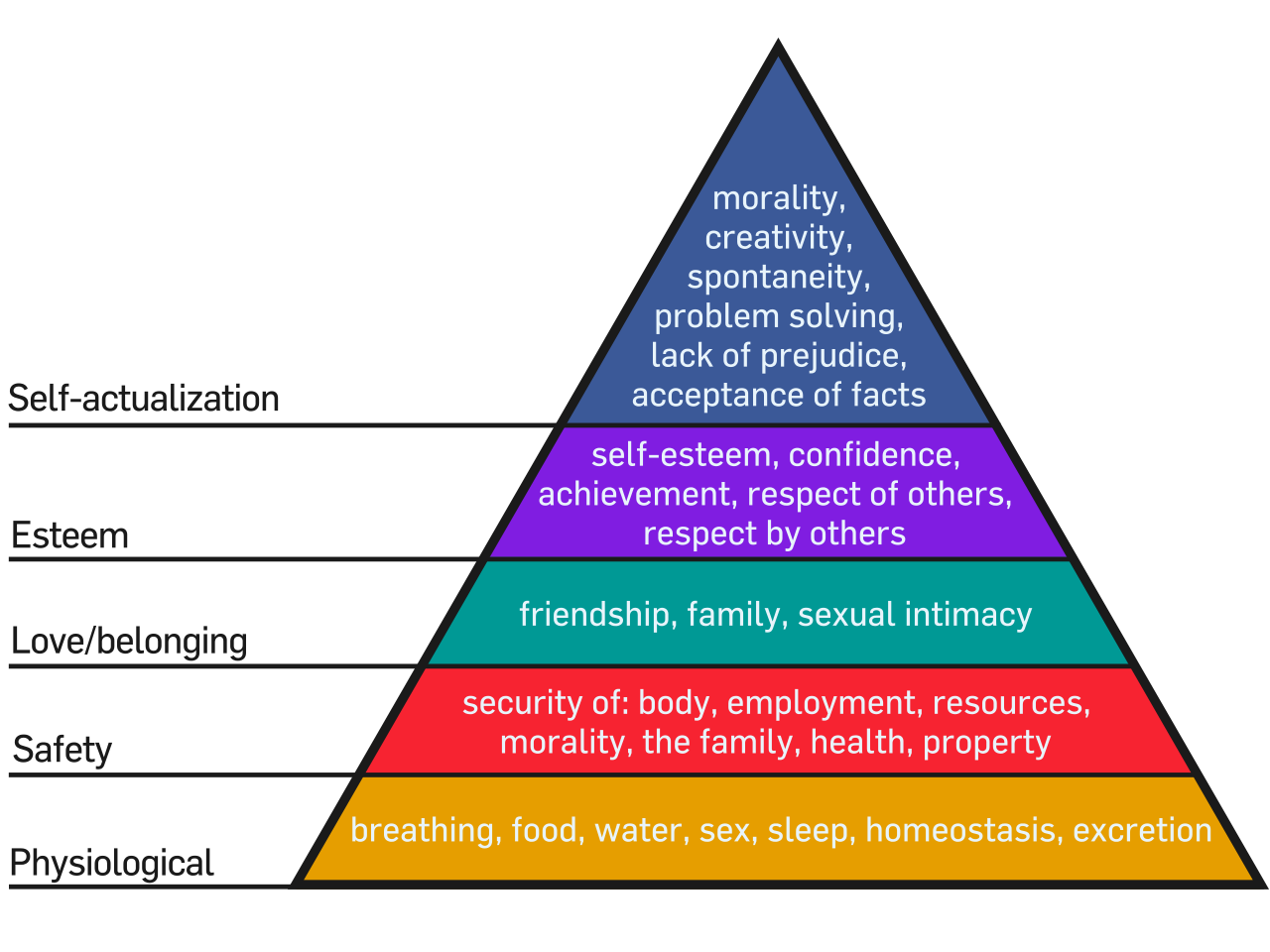
Man is a social, innately moral, animal. When we treat others with kindness and respect we feel good about ourselves, but being cruel destroys us.
Human beings have needs of different kinds, ranging in priority from basic survival needs to ultimate self-fulfilment. Like the foundations of a building, basic needs must be met before we can begin to achieve higher ones. The psychologist Abraham Maslow termed these our “Hierarchy of Needs”

Abraham Maslow (1908 – 1970) was a famous American clinical psychologist. He was particularly specialized in the area of humanistic psychology and became famous with his ground-breaking theory on the Hierarchy of Needs. This model is known as Maslow’s pyramid.
All humans have similar survival needs – food, clothing, shelter – and all share similar needs for esteem and a feeling of belonging. However, although our highest needs are more personal in nature, morality and integrity are absolute essentials. The house of our being requires a sound foundation and the mortar of integrity to bind all the bricks.
The brain is central to this issue. The human brain is comprised of parts of varying ages dating back millions of years to our earliest reptilian ancestors. In general, older parts perform automatic, unconscious maintenance activities and control unthinking responses. Only the cerebral cortex, the most recently evolved part, permits rational thought. Although we can think rationally, we are not fully rational animals as much of our behaviour is controlled by the ancient, unconscious parts of the brain.
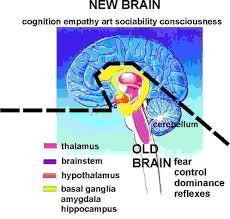
Internal conflicts can arise when we get different messages from both older and newer parts of our brain. Man has an instinctive preference for animal foods as they contain complete protein and are rich in energy and vitamins. People consume them eagerly whenever they get the chance. We also crave foods high in fat, sugar and salt as these are of high survival value and scarce in nature. Although instinct tells us that such foods are highly desirable, our cerebral cortex – our “advanced” brain – allows us to consider them rationally.
We are thus confronted with the following problems regarding the consumption of animal products:-
1. We know we can nourish ourselves perfectly adequately on plant foods alone, without having to consume animal foods.
2. We know that the consumption of animal foods causes unspeakable suffering to the animals concerned because we can empathise with them as we too are animals.
3. We know that the production of animal foods causes immense environmental destruction both on land and at sea. It also creates hunger and poverty as it is grossly wasteful of energy and requires vastly more land than is available.
4. We know that eating animal foods causes many “lifestyle diseases” that lead to debilitating illness and premature death.
Thus we face a dilemma over the consumption of animal foods. We appear to be driven by ancient, unthinking instinct, but our rational mind tells us that eating animal products is indefensible. Because we are moral beings we must deceive ourselves to justify it. When we deceive ourselves we generate self-contempt and damage our self-respect. However, self-respect, or self-esteem, is a primary psychological human need as Maslow shows. We must approve of ourselves in order to function fully as human beings.
Integrity and morality are essential components of self-esteem. A false image of integrity may fool others but never oneself. When we deceive ourselves we cannot be comfortable within ourselves and cannot have peace in our heart.
The ultimate irony therefore is that when we steal from others we end up stealing that which is most precious of all from ourselves: our self-esteem and integrity. The harm we so callously inflict on others returns to destroy us along with our dreams.
If we wish life to be good we must practise it. Intellect must rule instinct. Good lives are moral lives. Moral lives consist of showing respect, not just to other humans, but especially to those poor innocent creatures whose lives we so abominably abuse by our execrable behaviour. Only when we do that can we achieve our full human potential, ultimate “Self-actualisation”.
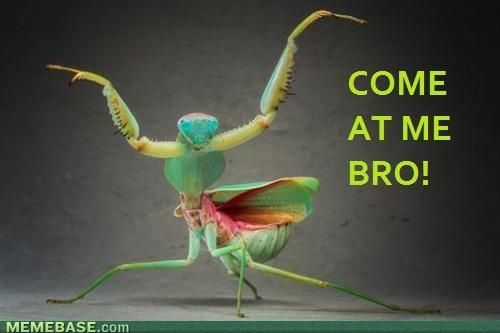
When I moved into my new home just over a year ago I discovered that I had company. Waking up at night and going into the kitchen I would regularly see at least one or two tiny cockroaches walking over the bench. When I approached them they momentarily froze, then ducked for cover.
If observed behaviour is any indication, then it is reasonable to assume that my houseguests were feeling fear. The questions must therefore be asked: if they can feel fear, then is it not reasonable to suggest that they can experience other emotions also?
Charles Darwin thought so, writing in his book The Expression of Emotions in Man and Animals that insects “express anger, terror, jealousy and love.” The idea didn’t catch on however, and 150 years later, studying insects for intelligence is still an under-developed field. The science of Entomology has been established for centuries, but until recently investigators concentrated on insect taxonomy and physiology, and how populations related to environment and agriculture. Their behaviour was studied, but it was assumed to be ‘instinctive’, not intelligent. Proposing to study insect intelligence and emotions would have gotten former generations of scientists laughed out of town.
Insects are not the easiest organisms to study however, let alone relate to, as they are so different to us. They can be defined as ‘small invertebrate animals with an adult stage characterized by three pairs of legs and two pairs of wings’. They are segmented, modular, and their nervous system is planned along decentralised lines. An insect has many different sub-brains in different parts of its body, which feed into and can be controlled by a central brain but can also function separately. Even if the central brain of an insect stops working, so long as the leg sub-brains are intact, they can keep walking.
Since entomologists have been turning their attention to insect intelligence they have discovered problem solving, advanced communication, social skills, adaptability, and memory. For example researchers from the University of Oxford’s Centre for Neural Circuits and Behaviour showed that fruit flies take longer to make more difficult decisions, suggesting they ‘think before they act’. Bees, when offered a reward from a perch of a certain colour, will return first to perches of that colour. Bees are famous for the ‘waggle dance’, first described by Karl von Frisch. When they have located a source of food bees return to their hive and through a complicated series of manoeuvres transmit the location and route to their mates, who then fly off to gather the food.
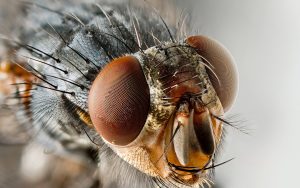
Thoughtful Drosophila?
Evidence is also emerging that so called ‘lower animals’ such as worms, can experience pain and suffering. One striking example of this is the presence of hormone levels. For example, just as certain hormone levels can validate the presence of pain in humans, when an earthworm is injured, its nervous system secretes an opiate substance that has the role of attenuating pain.
We humans are the indiscriminate Dispensers of Death to every other life form on the planet, including insects. We kill billions of them every year largely through insecticides, and this has led to a massive decline in insect numbers. Older citizens wonder what has happened to all the butterflies, bees, wasps, praying mantises, moths and dragonflies that used to be so common in their youth. Insects pollinate blossoms, perform scavenging roles, and recycle nutrients back into the soil. Their annhilation is just one part of the ‘sixth mass extinction’ currently taking place, brought about by human overpopulation, overconsumption, and wanton disregard for the rights of other species.
The jury may still be out on the true nature of insect intelligence, and their ability to feel (as opposed to ‘demonstrate’) emotions. But if we are appalled at the thought of deliberately hurting sentient beings, then our annihilating thumbs and trigger fingers would do well to give insects the benefit of the doubt. If you stick a cockroach with a pin and see it writhe, it is not unreasonable that it is feeling not only pain, but also negative emotions.
Fortunately, my cockroaches are in no danger at all of that.
Sandra Kyle

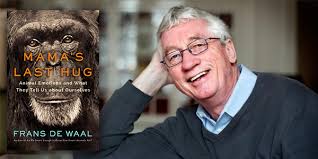
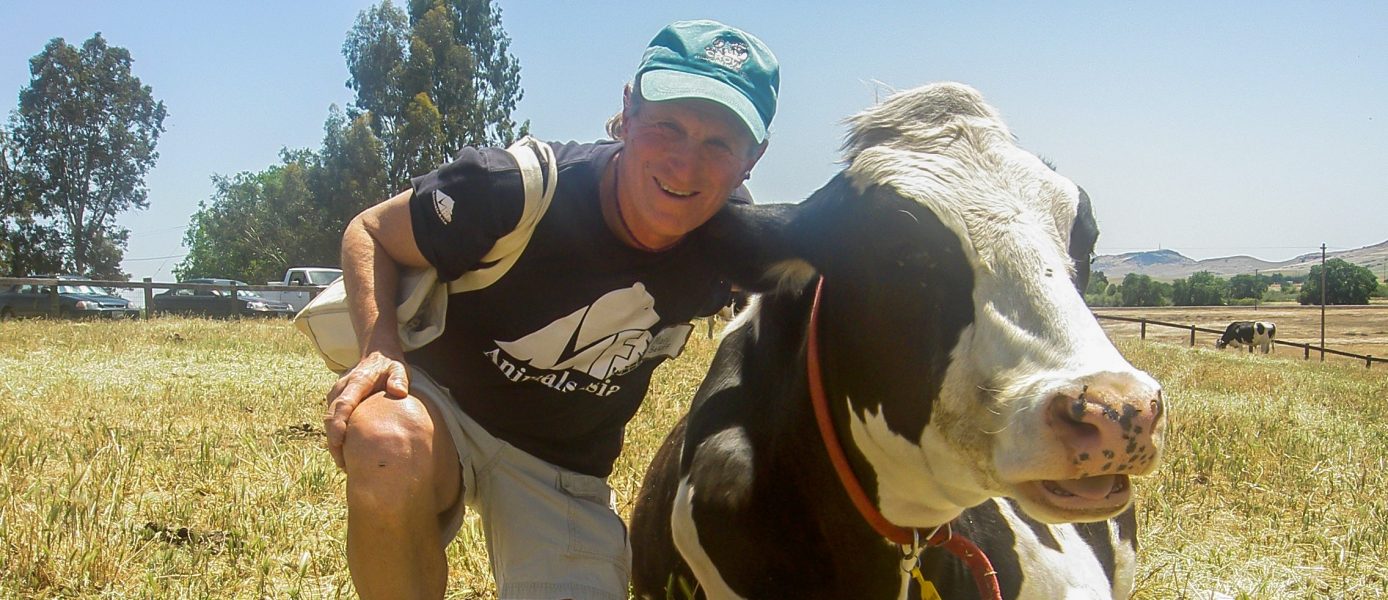
In this, the first of our Q&A series, prolific scientist and author Marc Bekoff, Professor Emeritus of Ecology and Evolutionary Biology at the University of Colorado, Boulder, answers our questions.